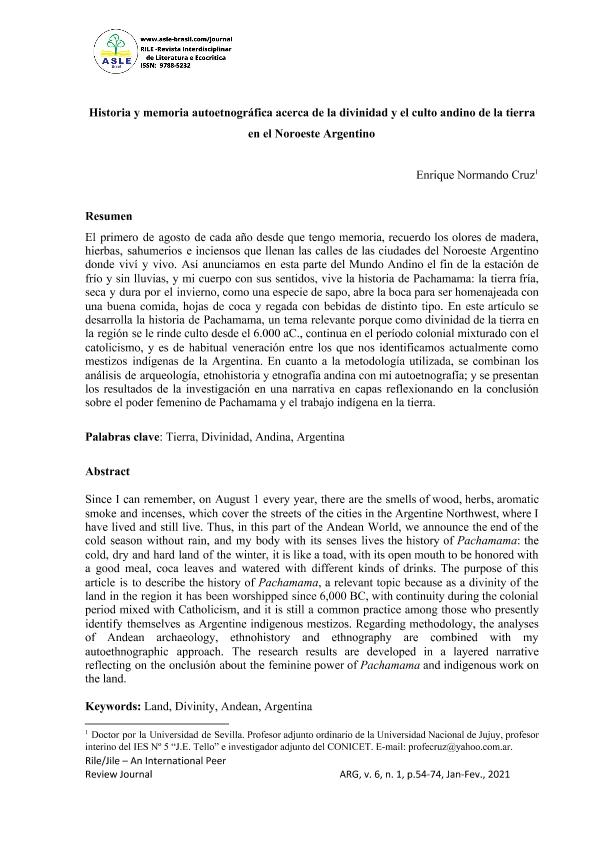Artículo
El primero de agosto de cada año desde que tengo memoria, recuerdo los olores de madera, hierbas, sahumerios e inciensos que llenan las calles de las ciudades del Noroeste Argentino donde viví y vivo. Así anunciamos en esta parte del Mundo Andino el fin de la estación de frío y sin lluvias, y mi cuerpo con sus sentidos, vive la historia de Pachamama: la tierra fría, seca y dura por el invierno, como una especie de sapo, abre la boca para ser homenajeada con una buena comida, hojas de coca y regada con bebidas de distinto tipo. En este artículo se desarrolla la historia de Pachamama, un tema relevante porque como divinidad de la tierra en la región se le rinde culto desde el 6.000 aC., continua en el período colonial mixturado con el catolicismo, y es de habitual veneración entre los que nos identificamos actualmente como mestizos indígenas de la Argentina. En cuanto a la metodología utilizada, se combinan los análisis de arqueología, etnohistoria y etnografía andina con mi autoetnografía; y se presentan los resultados de la investigación en una narrativa en capas reflexionando en la conclusión sobre el poder femenino de Pachamama y el trabajo indígena en la tierra. Since I can remember, on August 1 every year, there are the smells of wood, herbs, aromatic smoke and incenses, which cover the streets of the cities in the Argentine Northwest, where I have lived and still live. Thus, in this part of the Andean World, we announce the end of the cold season without rain, and my body with its senses lives the history of Pachamama: the cold, dry and hard land of the winter, it is like a toad, with its open mouth to be honored with a good meal, coca leaves and watered with different kinds of drinks. The purpose of this article is to describe the history of Pachamama, a relevant topic because as a divinity of the land in the region it has been worshipped since 6,000 BC, with continuity during the colonial period mixed with Catholicism, and it is still a common practice among those who presently identify themselves as Argentine indigenous mestizos. Regarding methodology, the analyses of Andean archaeology, ethnohistory and ethnography are combined with my autoethnographic approach. The research results are developed in a layered narrative reflecting on the onclusión about the feminine power of Pachamama and indigenous work on the land.
Historia y memoria autoetnográfica acerca de la divinidad y el culto andino de la tierra en el Noroeste Argentino
Fecha de publicación:
10/01/2021
Editorial:
Associação de Literatura e Ecocrítica
Revista:
Revista Interdisciplinar de Literatura e Ecocrítica
ISSN:
9788-5232
Idioma:
Español
Tipo de recurso:
Artículo publicado
Clasificación temática:
Resumen
Palabras clave:
TIERRA
,
DIVINIDAD
,
ANDINA
,
ARGENTINA
Archivos asociados
Licencia
Identificadores
Colecciones
Articulos(UE-CISOR)
Articulos de UNIDAD EJECUTORA EN CIENCIAS SOCIALES REGIONALES Y HUMANIDADES
Articulos de UNIDAD EJECUTORA EN CIENCIAS SOCIALES REGIONALES Y HUMANIDADES
Citación
Cruz, Enrique Normando; Historia y memoria autoetnográfica acerca de la divinidad y el culto andino de la tierra en el Noroeste Argentino; Associação de Literatura e Ecocrítica; Revista Interdisciplinar de Literatura e Ecocrítica; 6; 1; 10-1-2021; 54-74
Compartir




